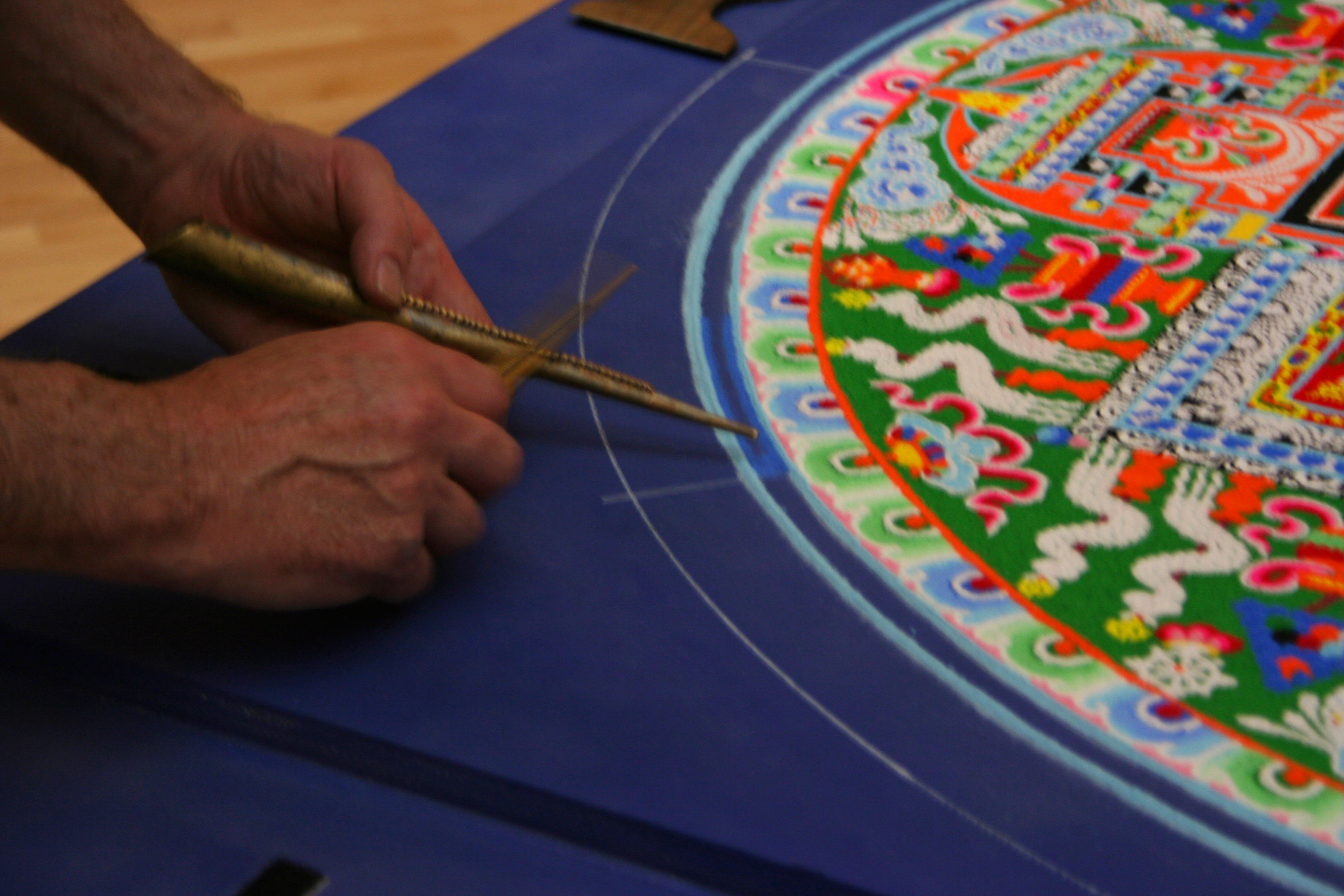Monks Create Mandala in Simmons MPR
-
-
slice.mit.edu
- 2
Filed Under
Recommended

Yesterday I stopped by Simmons Hall where two monks have been working on a sand mandala of Arya Tara, the female Buddha in Tibetan Buddhism who, some believe, represents the Supreme Mother of Compassion.
A couple students entered the room with me and, like myself, they didn't know much about the origins of mandala making or their significance. One student said she heard that mandalas were created as microcosms of a perfect world or cosmos. A bit later, another woman came through and said she thought they were about impermanence. This seemed plausible since on Saturday, when the mandala will be freshly complete, a dissolution ceremony will take place where the millions of meticulously-placed sand grains will be washed into the Charles River.
Sitting in Simmons, I wondered aloud if it seemed funny to have a complicated time lapse photo/video system set up to capture a practice that, in many ways, did seem to be about impermanence. A guy next to me laughed. "You're gonna go, those cameras are gonna break, and in a million years, the photos are going to go away too. You think it's permanent," he said, "but it's not!"
Later I did some reading and found that a mandala:
- can be a schematized representation of the cosmos (Random House unabridged dictionary)
- may have derived from the circular stupa and the ritual of walking around the stupa in a circle (Columbia Electronic Encyclopedia)
- can be an instrument of meditation (Encyclopedia Britannica)
- can symbolize life's impermanence (New York Times)


If you'd like to see the mandala before Saturday's dissolution ceremony, check the schedule for viewing times.



Comments
Luis Cárdenas
Thu, 05/07/2009 8:09pm
"Remember always that you are just a visitor here, a traveler passing through, your stay is but short and the moment of your departure unknown..."
-Dhammavadaka
jim bier
Wed, 04/29/2009 8:18am
Kind of like life. One can make it beautiful or ugly, but it will be over, for sure.